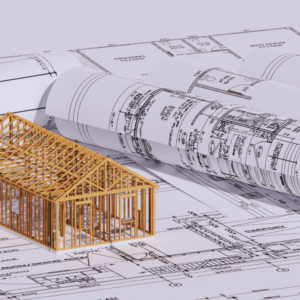1. Introduction to BIM Estimating Services
BIM estimating services use digital 3D modeling to provide detailed and dynamic cost estimations for construction projects. By integrating information from various design and construction phases, BIM-based estimates are highly accurate and adaptable, allowing contractors, architects, and clients to make informed decisions at every project stage.

2. Importance of BIM Estimating in Construction
BIM estimating is essential because it:
- Reduces Cost Overruns: By creating detailed cost models early on, BIM minimizes unforeseen expenses.
- Improves Accuracy: BIM ensures precise estimates by capturing all project components, from materials to labor.
- Enhances Collaboration: BIM centralizes data, facilitating better communication across project teams.
Incorporating BIM estimation helps achieve both efficiency and precision, which are critical in large-scale construction projects.
3. Core Components of BIM Estimating
BIM estimating relies on several key elements:
- 3D Modeling: Creates a visual and data-rich representation of the building.
- Cost Database: Links the BIM model to a dynamic cost database, updating costs as design changes occur.
- Quantity Takeoff: Automates the measurement and counting of materials directly from the model.
These components streamline the estimation process and support real-time updates, making it easier to manage construction costs accurately.
4. BIM Estimating Process Explained
The BIM estimating process includes:
- Design Integration: Pulls design data into the BIM model to form the basis of cost estimation.
- Quantity Extraction: Uses the model to extract material quantities and other cost-related data.
- Cost Analysis: Combines extracted data with current market prices to produce a precise estimate.
With BIM, estimators can continuously monitor and update costs as project details evolve, keeping budgets in check throughout construction.
5. Types of BIM Estimates
BIM estimating services cover various project stages:
- Conceptual Estimates: Preliminary costs based on initial design concepts.
- Preliminary Estimates: Estimates with more specific details as project designs develop.
- Detailed Estimates: Comprehensive breakdown of costs, including all project elements.
- Construction Estimates: Finalized costs during the construction phase, often reflecting any adjustments.
Each type serves a distinct purpose, enabling cost forecasting and budget management from concept to completion.
6. Advantages of BIM Estimating Services
BIM estimating offers numerous advantages:
- Cost Savings: Reduces costs associated with delays, miscommunication, and rework.
- Accuracy: Provides a precise estimate by accounting for all project variables.
- Time Efficiency: Speeds up estimation with automated quantity takeoff.
- Risk Mitigation: Allows early detection of potential cost risks.
These benefits make BIM an invaluable tool for construction projects of all sizes, helping them stay on budget and schedule.
7. Key Technologies in BIM Estimating
Technologies driving BIM estimating include:
- BIM Software: Software like Revit, ArchiCAD, and Navisworks support detailed modeling and data extraction.
- 3D Modeling Tools: Tools such as SketchUp assist with creating accurate, data-rich visualizations.
- Cloud Collaboration Platforms: Enable real-time updates and sharing among teams for seamless project coordination.
Using these technologies, construction professionals can streamline workflows and improve communication across all project phases.
8. The Role of Quantity Surveyors in BIM Estimating
Quantity surveyors (QS) are vital in BIM estimating, as they:
- Monitor Costs: Track real-time expenses and ensure project budgets are met.
- Adjust Budgets: Adapt budgets as new data or design changes are introduced.
- Improve Efficiency: Help to identify cost-effective solutions without compromising quality.
The QS’s expertise in BIM helps bridge the gap between design and budget, keeping the project financially feasible.
9. BIM Estimating vs. Traditional Estimating
Compared to traditional methods, BIM estimating:
- Reduces Manual Calculations: Automates much of the quantity takeoff and cost calculations.
- Offers Real-Time Updates: Reflects design changes instantly, ensuring accurate and current estimates.
- Increases Collaboration: Centralizes data, making it accessible to all stakeholders.
While traditional estimating methods rely heavily on manual data entry and are prone to human error, BIM estimating significantly improves efficiency and accuracy.
10. BIM 5D Estimating
5D BIM combines 3D modeling with time (4D) and cost (5D) elements, allowing for:
- Real-Time Cost Forecasting: Updates costs as designs change, offering a more dynamic and interactive budgeting approach.
- Project Lifecycle Analysis: Considers costs throughout the project’s lifespan, including potential future expenses.
5D BIM estimating provides deeper insights into how changes impact costs, which improves financial planning and minimizes risks.
11. Factors Affecting BIM Cost Estimating Accuracy
Several factors influence BIM estimating accuracy:
- Design Changes: Alterations require immediate adjustments to the model, impacting costs.
- Data Quality: The accuracy of a BIM model depends on reliable and complete data inputs.
- Market Conditions: Fluctuating prices for materials and labor affect cost predictions.
Understanding these factors helps estimators refine models to produce more reliable estimates.
12. Best Practices for Effective BIM Estimation
To optimize BIM estimation:
- Regular Updates: Continuously revise estimates as new data or design changes emerge.
- Stakeholder Collaboration: Encourage open communication across teams to stay aligned.
- Precision in Modeling: Avoid over-simplifications to maintain estimate accuracy.
Implementing these best practices helps ensure that BIM estimations are as accurate and effective as possible.
13. Challenges in BIM Estimating Services
Despite its benefits, BIM estimating faces challenges:
- Learning Curve: Mastering BIM software can take time and training.
- Data Integration: Ensuring seamless integration of all project data is essential but complex.
- Cost of Software: BIM software requires investment in licenses, hardware, and skilled personnel.
Overcoming these hurdles requires commitment to training and the adoption of scalable tools.
14. Future Trends in BIM Estimating Services
Looking ahead, BIM estimating is evolving to include:
- AI Integration: AI can predict cost trends and detect potential budget overruns.
- VR/AR Applications: Visualizations help clients and stakeholders understand cost impacts in an immersive way.
- Sustainable Estimating: More estimators are considering eco-friendly materials and designs for greener construction.
These trends will likely make BIM estimating even more precise, efficient, and adaptable to modern construction needs.
15. Frequently Asked Questions
- What is BIM estimating?
- BIM estimating uses 3D models and integrated data to calculate and forecast construction costs.
- How does BIM estimating differ from traditional methods?
- BIM estimating automates calculations, provides real-time updates, and improves collaboration, unlike manual traditional methods.
- BIM estimating automates calculations, provides real-time updates, and improves collaboration, unlike manual traditional methods.
 What are the main benefits of BIM estimating?
What are the main benefits of BIM estimating?
- It reduces costs, increases accuracy, saves time, and enables better risk management.
- Why is 5D BIM important?
- 5D BIM integrates cost and time data with 3D models, providing real-time budget tracking as project details change.
- What software is commonly used in BIM estimating?
- Revit, ArchiCAD, and Navisworks are popular BIM software options for estimating services.
- Is BIM estimating suitable for all project types?
- BIM estimating is highly beneficial for complex or large projects but can be adapted for smaller projects with the right tools. View More About Us.

